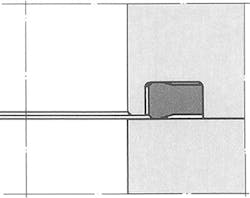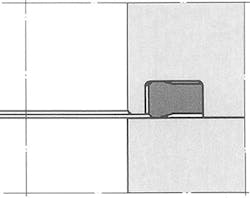How NOT To Make Your Hydraulic Repairer Or Supplier Rich
June 22, 2014
2 min read
If you're a hydraulic machine owner, or responsible for the same, one sure-fire way of transferring a scary amount of dinero from your bank account to your hydraulic repairer's is to allow your hydraulic machines to run hot. The following email exchange I had with John (not his real name), one of my Hydraulics Pro Club members from South Africa, is a perfect illustration:
John: The hydraulic systems on my customer's underground machines are running at 148°C. I have replaced the NBR 90-shore o-rings with Viton 75 shore o-rings on the SAE flanges but they are still failing. Are 75 shore o-rings suitable for 310 bar operating pressure?
BC: You need to get that operating temperature down. Without doing so everything else you do will be in vain.
John: Yes I understand that but I only supply hydraulic hose, fittings and o-rings.
BC: In that case, keep on supplying them. Your customer's ignorance and/or inaction is going to make you rich! But in terms of your seal options for the SAE flanges, for high pressures, 90-shore o-rings are a better choice than 70/75-shore. And even though Viton has a temperature rating of 200°C, it does NOT mean it's longevity is unaffected by extreme operating temperatures. You should also consider that being underground, these machines will likely be running some type of fire-resistant hydraulic fluid. Viton is compatible with all fire-resistant fluids, except HFC fluids, so you need to confirm what type of fluid is being used so that seal compatibility is not an issue.
As already stated, you're really up against it with the machines' sky-high operating temperature. But another option you could try as a 'Band-Aid' solution for the SAE flanges is Parker Pradifa's polyurethane SAE flange seal (profile OV)-see below.
Parker Pradifa SAE flange seal (profile OV)
These were (and probably still are) standard equipment on O&K (now Terex) mining-size excavators (250 tons operating weight and above). HOWEVER, being polyurethane, they're not compatible with HFA and HFB fire-resistant fluids. Furthermore, the manufacturer's maximum temperature rating is 110°C. So how long this seal would cope with near 150°C operating environment is an open question.
Allowing a hydraulic machine to run hot is a costly mistake, and one that a lot of hydraulic equipment users make. There are six more to avoid, which I explain in "6 Costly Mistakes Most Hydraulics Users Make…" If you haven't read it yet, download your free copy here.
About the Author
Brendan Casey Blog
Author
Brendan Casey is a war-weary and battle-scarred veteran of the hydraulics industry. He's the author of The Hydraulic Troubleshooting Handbook, Insider Secrets to Hydraulics, Preventing Hydraulic Failures, The Definitive Guide to Hydraulic Troubleshooting, The Hydraulic Breakdown Prevention Blueprint and co-author of Hydraulics Made Easy and Advanced Hydraulic Control. And when he's not writing about hydraulics or teaching it, Brendan is flat-out helping consulting clients from a diverse range of industries solve their hydraulic problems. To contact him visit his company's Website:
www.HydraulicSupermarket.com
Sign up for our eNewsletters
Get the latest news and updates

